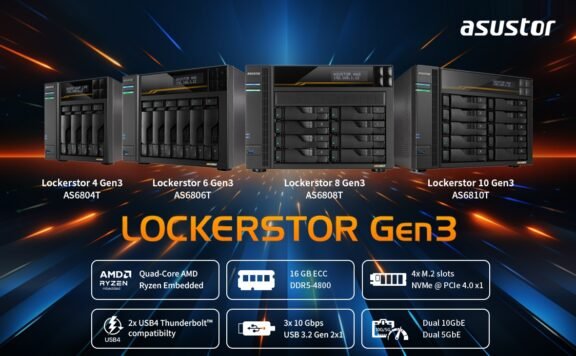Guest written by: Nick Jheng, Sales Account Manager at Synology
The need for reliable data storage is no longer confined to office premises. It has found its way to homes with the amount of files that we store such as documents, multimedia, videos and personal photos, continuing to pile up year after year. As a consumer, you would have examined different types of storage from portable USBs to external drives to storing on the cloud.
Nowadays, we all own multiple devices and deal with increasingly-large files that the notion of storing everything on one device where it can only be accessed by a single user is becoming increasingly challenging. Traditional storage devices such as external hard drives have their own limitations in terms of maximum storage capacity as well as the likelihood of hardware failure.
This can make locating or rescuing personal files extremely difficult especially if they have been accidentally wiped by the user. On the other hand, buying additional storage on your smartphone or a new SSD for your laptop can be expensive options and a hassle transferring files from one storage medium to another.
In light of the above, a reliable alternative that can considered for home users is Network Attached Storage (NAS) devices. NAS is a small box connected to a network that contains high-capacity hard drives. With their Terabytes of storage space, you can store all your data in one place, from important documents to precious photos and video collections.
By using web browsers or mobile apps, the user can access their files and share them with people on-the-go. NAS devices also have reliable backup and recovery features, which should give the user the peace of mind of not needing to back up their data on multiple storage devices. With a multitude of protection mechanisms to safeguard your data 24/7, you can easily access through your home network and the internet.
Overall, buying a NAS for your home media server can become an excellent investment. Below are the top reasons why:
Massive Storage – You can expand the storage capacity of a NAS device to up to 40TB as you go. So store family photos and videos to your heart’s content. You can even create user accounts for individual family members to share the storage. Unlike those external hard drives scattered around, you now put everything on one single server. Do a quick search on it, and you’ll get anything you need – such as photos from a trip to Europe three years ago – in seconds.
Your One Stop Library for Home Entertainment: Multimedia solutions that accompany NAS devices can organise your collection of movies, TV shows, and home videos, turning your living room into a home theater. This gives you the perfect opportunity to leave your computer and instead watch them on big-screen TV with your family. You can also use a Chromecast and plug it in to your old HDMI TV and immediately start streaming your photos, music, and videos from your home NAS. Also, worth noting that more and more NAS models are now compatible with Plex through installation of the Plex Media Server package. For media-hungry users this is a fantastic way to organise and stream your media library natively to the Plex app variety of devices.
Apple Support: NAS devices also support Apple TV, including transcoding and playing non-supported formats on it. Works for iPhone, iPad, and all the other devices as well. With the support of Time Machine Backup, you can easily schedule an automatic data bp on your Mac to NAS with few simple clicks.
Access and Share Your Files From Anywhere: Have you ever rushed back to the office after leaving for the day, just because you forgot to take your external hard drive with you? Or simply couldn’t find the flash drive that contains your PowerPoint presentation before an important meeting? Now centralise all your data with NAS – and access the files you need quickly and easily, wherever you are. Sharing documents or even a movie on yAS with your friends simply with a single file share link even when you’re far from home.
Reliable Backup Features: Running out of space with all the 4K videos and photos taken on your phone or files store in your computer? NAS devices today are equipped with an app that automaticabacks them up to the NAS server for you. Also available is RAID protection, which safeguards you from the dreadful hard drive failure.
Super Easy to Set Up: Setting up a NAS is relatively easy — you don’t need to have much more technological savvy than it took to set up Windows and navigate to this web page. Fill the NAS with drives, plug it in, and attach it to your network either wirelessly or with an Ethernet cable. Although NAS units have their own processor, motherboard, and RAM, most are controlled through an internet browser using a simple interface designed to be suitable for all users. You will have it set up and storing your data in no time.





